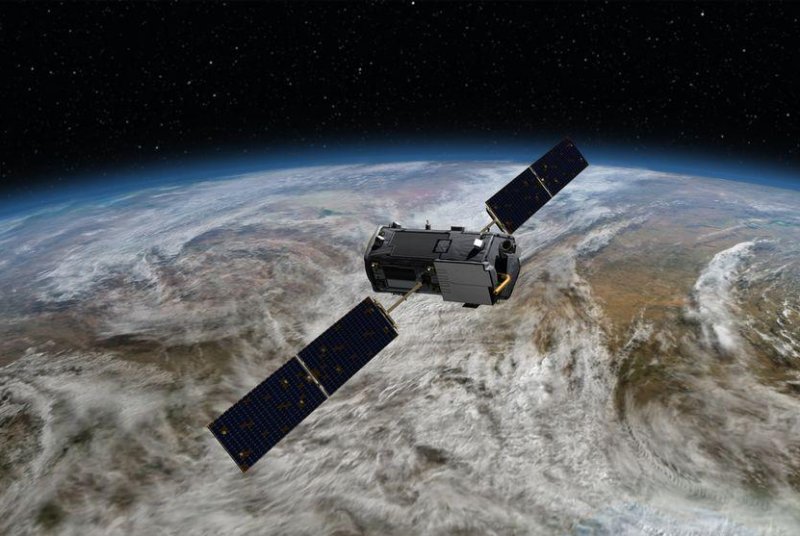An illustration of the Orbiting Carbon Observatory-2, which will measure and map CO2 emissions rising from Earth's surface. (JPL/NASA)
BUELLTON, Calif., June 30 (UPI) -- To help NOAA keep more precise tabs on exactly how much carbon is being released into the atmosphere, NASA is launching a satellite dedicated solely to measuring CO2.
The Orbiting Carbon Observatory-2, or OCO-2 for short, will orbit Earth constantly measuring and mapping carbon emissions. But not all the carbon that rises into the atmosphere remains there. About half falls back to Earth and is absorbed. OCO-2 will help scientists study this process and offer climatologists a better understanding of the role oceans, soils and forests play in the release and absorption of carbon dioxide.
"Somewhere on earth, on land, one-quarter of all our carbon emissions released through fossil fuel emissions is disappearing," David Crisp, a researcher at NASA's Jet Propulsion Laboratory, told The New York Times. "We can't identify the processes responsible for this. Wouldn't it be nice to know where?"
"We really don't have a lot of data right now to understand the uptake of carbon by these terrestrial ecosystems," Paul Wennberg, an OCO-2 scientist and a researcher at the California Institute of Technology, recently told the Los Angeles Times.
Explaining how the OCO-2 will perform its job, Wennberg added: "It measures the average amount of CO2 above a place on Earth, which is different from almost all other measurements of CO2, which are measurements in a small volume of air."
The Orbiting Carbon Observatory-2, a $465-million mission, is set to launch at 2:56 a.m. on Tuesday from Vandenberg Air Force Base, near Buellton, California. The satellite's name has the number two attached to the end of it because this is NASA's second attempt at launch a carbon-charting spacecraft. Five years ago, the original OCO malfunctioned on takeoff and crashed into the ocean, a devastating $273 million loss.
This time around, the OCO-2 will put into orbit via a Delta 2 rocket, which has an impressive track record of successful launches. This will be the second of five satellites launched by NASA's earth sciences division this year -- all five built to study Earth.















